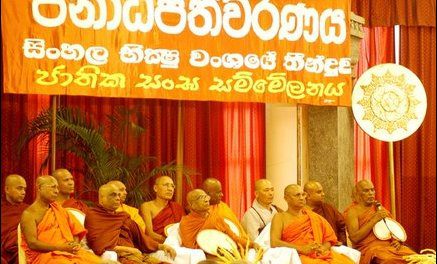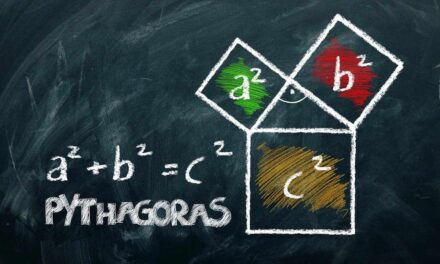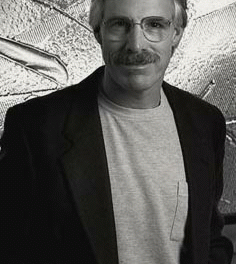 Relaxation or Religion?
Relaxation or Religion?
It is generally claimed that yoga and meditation are scientific techniques that enable us “to do less and accomplish more.” Yoga and meditation are supposed to be techniques of relaxation that have nothing to do with philosophy and religion. They are presented as exercises that help us to enjoy better health and serenity and to reduce stress levels. But are they really so? Sudhakar Mondithoka examines this.
The Claims
It is generally claimed that yoga and meditation are scientific techniques that enable us “to do less and accomplish more.” Yoga and meditation are supposed to be techniques of relaxation that have nothing to do with philosophy and religion. They are presented as exercises that help us to enjoy better health and serenity and to reduce stress levels. The blurb on the cover of Maharishi Mahesh Yogi’s book Transcendental Meditation read like this: “Serenity without drugs!” He went on to say that life need not be the painful struggle it is commonly represented to be, that we are meant to be happy and that yoga and meditation offer a way for everybody, a way that involves no austere disciplines, no break with normal life and tradition and which gives fuller and deeper meaning to all religions.[2] These words of Yogi and the public pitch of the TM organization try to show that TM is a simple, natural, harmless technique for achieving relaxation, releasing stress and tension, increasing creativity and intelligence, and producing peace, fulfillment, and a host of other benefits. Many people in the corporate world believe in these claims and some companies even make arrangements for their employees to be trained in and to practice Yoga and Meditation. Some Christians have also been attracted to TM and Yogi claims that it is taught by Jesus and the writers of the Bible.[3] Is this all true? Do people understand the true nature of yoga and meditation? I think people do not understand and they are encouraged not to. One of the slogans used by the TM leaders is, “You don’t have to understand what is going on in TM to do it?”[4] This is the problem – people do not think and understand. So we should take a closer look at what goes on in yoga and meditation and understand the issue involved.
The Issue
The issue is whether yoga and TM are simply scientific techniques that help in reducing stress and tension and in increasing serenity and creative intelligence or they are religiously motivated and based on religious beliefs and teachings. To settle this issue or to ascertain the true nature of yoga and meditation we need to consider the history, organization, techniques and the teachings related to Yogi’s TM or Science of Creative Intelligence (SCI).
History of the Movement
Yogi was born in 1911. He studies physics at Allahabad University and after graduating in 1942 he became a devotee of Swami Brahmananda Sarswathi (Guru Dev). When Guru Dev died in 1953 he went into silent solitude for 2 years. He had been commissioned by Guru Dev to develop a new Hindu technique to revive man’s connection with the ultimate reality, “the Being,” known as the Brahman-Atman and he developed his technique and philosophy of TM around 1955. From 1956-’58 he spoke on the Vedic teachings of the unity of Being and the necessity to achieve that unity through TM. He started the Spiritual regeneration Movement (SRM) for spreading TM in 1958 in India and in 1959 in the US. In 1965 Yogi renamed the organization as the Student International Meditation Society (SIMS) and International Meditation Society (IMS) to promote TM and SCI among students and general public respectively. Finally in 1972, Yogi pulled all the organizations (including Maharishi International University) together under one umbrella organization (World Plan Executive Plan). We can tell that the name of the organization has been changed several times to make it appear that TM has nothing to do with religion. Yogi also gradually dropped his movement’s religious terminology in favor of psychological and scientific language.[5] But when we examine Yogi’s writings and the foundations of the TM organization its true nature will become obvious.
The True Nature and Foundations of Yoga and TM
From Yogi’s writings we understand that TM is a revival of the Vedanta philosophy of monism, derived from the Hindu Vedic Scriptures, the Upanishads. He traced inspiration for TM to his divine master, Guru Dev. He says, “It was the concern of Guru Dev, His Divinity Swami Brahmananda Sarswathi, to enlighten all men everywhere that resulted in the foundation of the World-wide Spiritual Regeneration Movement . . .”[6] and Guru Dev was the leader of the Shankaracharya tradition at Jyothir Math. We can see that Yogi’s philosophy of the SCI and his technique of TM are from the Vedanta school (Hindu monistic or Advaitha philosophy developed by Sankara). The technique comes out of the Yoga school of Indian philosophy and encompasses mainly the last three steps of astanga-yoga called raja-yoga, the internal disciplines (the first five are called hata-yoga, the conscious external disciplines).
The six schools of Indian philosophy are Nyaya, Vaisesika, Samkya, Yoga, Mimamsa, and Vedanta. Yoga and Vedanta are currently prominent. Yoga outlines the main technique, practice, and philosophy for transcending to the condition of samadhi. Yoga was systematized around 200 BC by Patanjali. The word ‘yoga’ is derived from two roots, yujir and yuja meaning ‘yoking’ and ‘control of senses’ respectively. Yoga means ‘yoke’ or ‘union’ with God or the Ultimate Reality, Brahman and it is an eight-step process called Astanga-yoga, a spiritual path leading to yoking or merging with Brahman.[7]
The eight steps or disciplines are: yama (restraint or abstention from excesses), niyama (observances or mental disciplines to seek purity of thought through contentment, study and devotion), asana (physical postures, but more than physical exercises and hence psychological disciplines to relax and calm the mind in preparation for transcending), pranayama (control of vital energy or life principle through proper breathing exercises to purify the body physically and spiritually), pratyahara (detachment of the mind from sense organs/sensuality or eliminating thoughts and sensory perception of objects), dharana (concentration of the mind within a center of spiritual consciousness in the body or fixing it on some divine form, either within the body or outside it), dhyana (m
editation or continual and unbroken thought directed toward the object of concentration), and samadhi (absorption or unity of the individual with the universe without the sense of individual existence).[8] At the dhyana or meditation stage unity of the individual with the universe is achieved, but with a remaining sense of personal existence and at the samadhi or absorption stage Atman, individual self merges with Paramathman, Brahman (like a drop of water merging with the ocean) transcending the personal, intellectual, tactile level of life and diffuses into the impersonal whole of the universe. So the goal of yoga and meditation is to attain salvation or liberation through disciplined activity. In Sanskrit it is described as citta-vritta-mrodha, which means ‘the stoppage of mental processes’. The ultimate goal is to achieve the state of absorption into the Brahman-Atman, the Impersonal Universe and this is called kaivalya or samadhi.
Conclusion
I hope it is evident by now that yoga and meditation are not what the promoters represent them to be (just techniques of relaxation), but are deeply religious and philosophical being rooted in the philosophy of Advaita Vedantha, a branch of Hinduism. A person who practices yoga and meditation ultimately loses himself or herself without knowing it. The nature of this path of enlightenment is such that it cultures the mind in such a way that it gradually loses interest in the practical life and the experiences of day to day living and such a mind necessarily becomes useless and hopeless for all practical purposes in life. So the end result is not that we become better people with serenity and greater productivity, but that we lose ourselves. Although some degree of success in relaxation can be achieved, the dangers (emotional and spiritual) far outweigh the benefits. For Mahesh Yogi only Brahman is real (ultimately) and ‘I am That eternal Being, though art That, and all this is That eternal Being in its essential nature’. The lack of knowledge of the ‘divine’ within is the root of all ills and sufferings of human life. But if we are essentially divine, where has the ignorance come from? How cum we find our selves as real individual beings and as sinful beings? The reality confirms that we are human and sinful and not divine essentially. Yoga and meditation are pantheistic in nature and one’s goal is to lose one’s personality in the oneness of the Ultimate that is impersonal. This takes away both from the unique, separate, and infinite personality of God the Creator and well as from the unique, separate, and finite personality of individual humans. The pantheistic view of reality denies the biblical view of God as Trinity, the deity of Christ, and the doctrines of human sin and atonement and salvation by grace through the sacrifice of Christ. It replaces resurrection with reincarnation and both grace and faith with human works. But peace with God (and the resulting peace with one’s self and others) is not achieved by looking inside oneself, but by looking up to Him who loved us and made the provision for our salvation. There is a biblical (Christian) alternative to TM that I call BM (Biblical Meditation) and that consists of meditation (filling our hearts and minds with God’s word/truth and pondering over or reflecting upon it and allowing it to impact our total being) on God’s Word, the only sure source of real peace. This is not about emptying our minds, but about filling our minds and about focusing on God, His attributes, His promises, His works, etc., so that we might be transformed from inside out and become better people. The Bible, God’s Word to humanity is full of instruction on the right kind of meditation that helps us in deepening our relationship with God and in improving our understanding of God and His Word to us (Joshua 1:8; Psalm 1; 77: 12; 119:15-16; 19:14; 5:1-3; Matthew 12:30; Romans 12:2; Colossians 3:2 etc.). In biblical meditation we are not alone. As we meditate God the Holy Spirit comes alongside and illumines our understanding (1 Corinthians 2:6-16) and helps in applying the truth of God’s word (which is useful for teaching, rebuking, correcting, and training in righteousness so that we might be thoroughly equipped for every good work – 2 Timothy 3:16) to our own lives.
[1] Although I am using the word meditation in a general sense and there are many different kinds of meditation taught and practiced, I am going to focus mainly on Transcendental Meditation because this has been the most popular form.[2] Maharishi Mahesh Yogi, Transcendental Meditation (New York: New American Library, 1968). The original title of this book was The Science of Being and Art of Living.[3] Ibid, 253-254.[4] Ronald L. Carlson, Transcendental Meditation: Relaxation or Religion? (Chicago: Moody Press, 1978), 7.[5] Ram Gidoomal and Mike Fearon, Karma ‘n’ Chip: The New Age of Asian Spirituality (London: Wimbledon Publishing Company, 1994), 160-161.[6] Maharishi Mahesh Yogi, On the Bhagavad-Gita (Baltimore: Penguin Books, 1967), 16.[7] Ram Gidoomal and Mike Fearon, The New Age of Asian Spirituality, p. 150. See S. Radhakrishnan, Indian Philosophy, Vol. 2 (New Delhi: Oxford University Press, 1999), 337-340 also.[8] See Gidoomal and Fearon, p. 160 and Radhakrishnan, p. 352
Copyright 2006 Sudhakar Mondithoka. All Rights Reserved. This article first appeared in Rev. Sudhakar’s blog http://theapologia.blogspot.com/. You can visit his website http://www.mondithokas.com/. For reprint permission, contact Rev. Sudhakar Mondithoka.
{moscomment}







What u have written is absolutely true!
It’s the same as the genesis temptation..”to become like God”…and salvation by work.
Your article is a complete load of crap and totally shallow. You have cut and pasted it from somewhere – not on iota of true analysis!! The problem with apologetics is that they start with the conclusions (that Bible is the true gospel) first and work backward on the evidence! I am amused by how all the apologetics I have met are flummoxed by basic, rational and logical questions on Christian motherhood statements!!! I am not saying that Hinduism is perfect and there is nothing wrong with it. But the best thing about it is that it is open, living and progressive. Christianity is closed and dead… Like its founder.